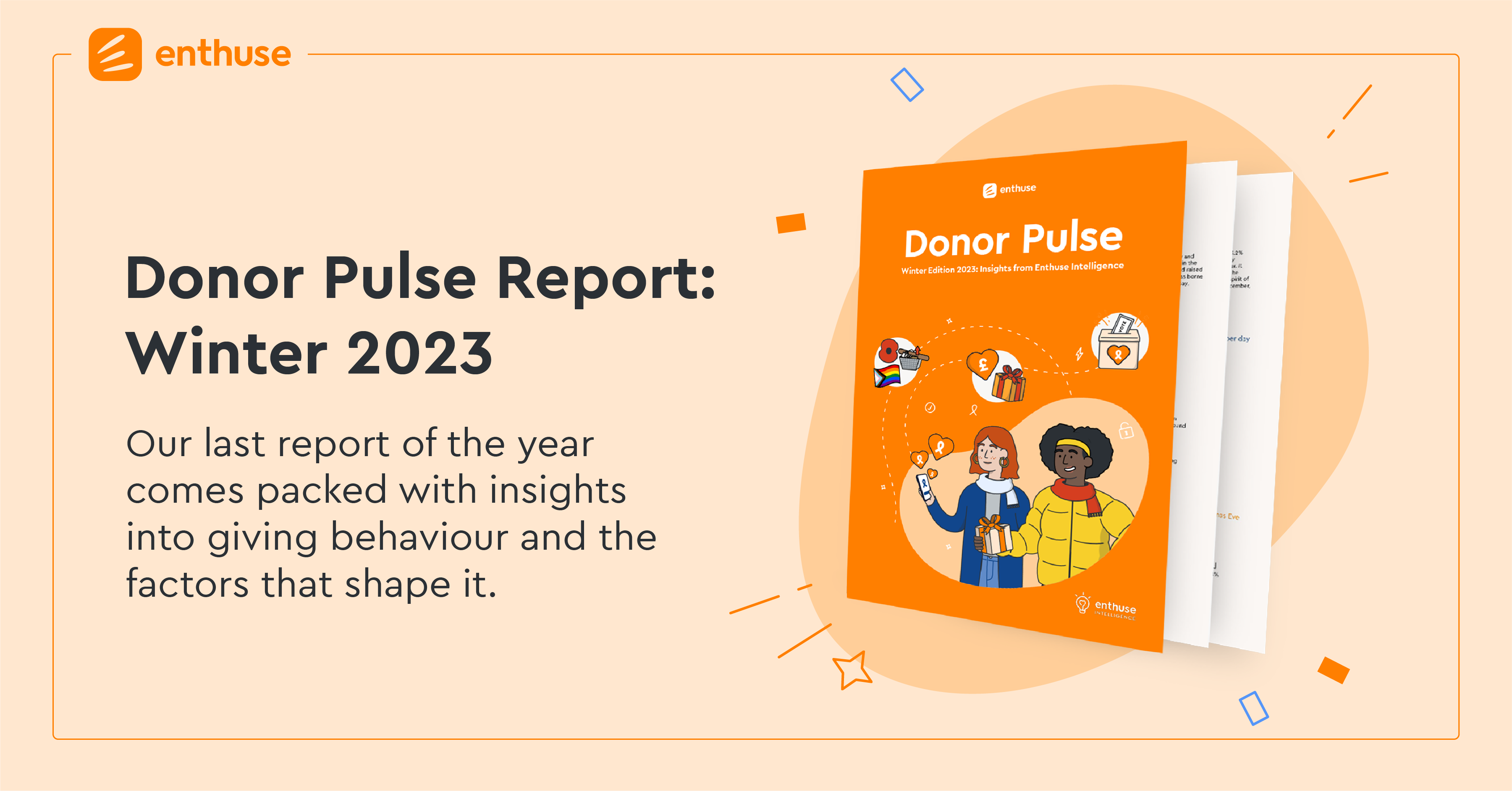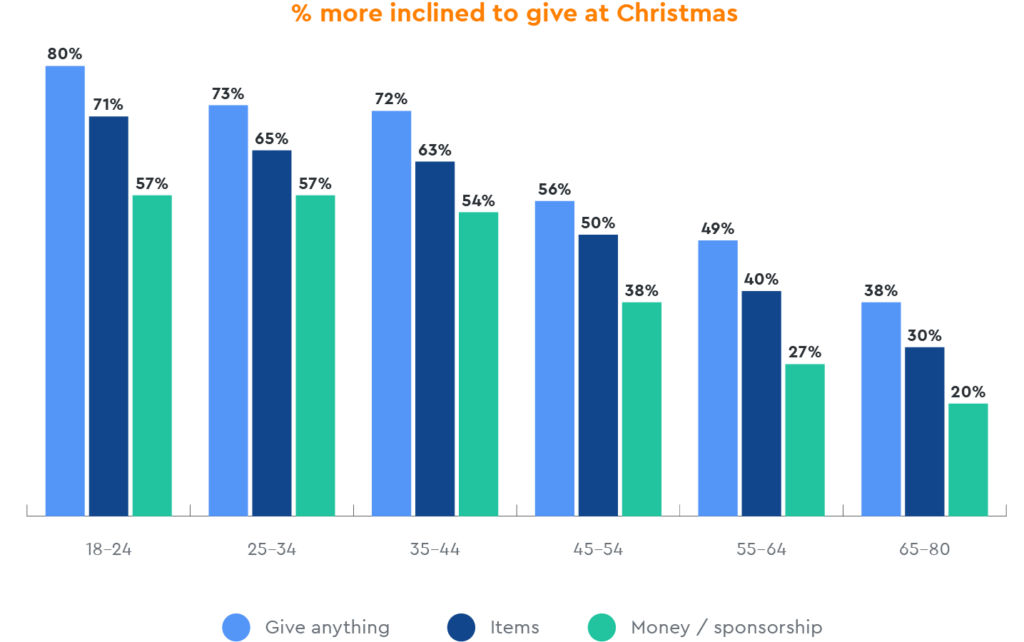
As 2023 draws to a close, we wrap up our insights with Donor Pulse Winter. The report looks at how people plan to give at Christmas, the public’s donation intentions regarding Gaza and Israel, and the phenomenon of ‘inverse giving’.
So what are some of the key findings?
Christmas giving
There is encouraging news for charities heading into the festive period, with more than seven in ten (72%) saying they are planning to donate over Christmas. This is a one percentage point increase on this time last year. Additionally, four fifths of 18-24 year olds say they are planning to donate to charity, either with money or items over the Christmas period. This drops to half (49%) for 55-64 year olds, showing the value of engaging younger donors.
What’s more, there’s evidence to suggest people are actively looking to give to good causes over December. More than two fifths (43%) say they like to give at Christmas and are looking for chances to donate. And around a third (31%) donate in response to campaigns that ask for contributions.

There is a split in how some plan to support charities over Christmas. 42% are more likely to give money than at other times of the year. This is made up of either a straight donation (34%) or taking part in a sponsored event (26%). In contrast, 61% are more likely to donate items over the festive season, such as contributions to a food bank (43%) or gifts for children (42%). Charities will want to be clear about how their supporters can best aid their work by showing what they can achieve with financial contributions.
The most popular cause areas the public is planning to support over Christmas are children’s charities (50%), homelessness (43%) and health (30%). Children’s charities are always popular at this time of year, jumping from around a fifth of people donating in the past two quarters to half for December. And homelessness charities the same, increasing from approximately 15% in the last 6 months to 43% for the festive season.
Encouragingly, it’s not too late for good causes to benefit from the public’s festive generosity, even if they only have a limited plan in place. 47% of the public say they have responded to a Christmas appeal, and for those who say they are likely to give over the festive season, this rises to two thirds (67%). In terms of tactics – straightforward ones can still be effective – amongst those very likely to give at Christmas, one in ten have responded to email campaigns, and close to one in five to social media adverts.
“Christmas continues to be a generous time of year and it’s great news for charities that so many are actively looking to give over this period. The younger generation are much more inclined to give over December, and there’s still time for social media and email campaigns to make an impact, as well as more traditional methods like text messages and phone calls.”
Chester Mojay-Sinclare, CEO & Founder, Enthuse
Humanitarian aid and charities in politics
The research indicates that charities supporting those impacted in Gaza and Israel may need to give clear messaging on why funds are needed and how they’ll be used in the area. 25% of people said they don’t understand the politics in the region and 26% were unsure the aid would reach the right place. However, 1 in 10 (9%) people have already given to provide humanitarian aid in Gaza or Israel, and a further 19% plan to.

The data reveals a difference in giving by age when it comes to Gaza and support around Armistice Day. 18% of over 45s have donated to charities supporting the armed services and veterans, compared to 8% of under 45s. The picture is the opposite for Gaza, with 12% of under 45s having donated – double the 6% of over 45s who have given.
Domestically, charities seem to increasingly be drawn into political discussions as the UK ramps up to a General Election, but the public is divided on whether or not this is a good idea. Half of people want charities to campaign for change versus 44% who believe they should steer clear.
That said, there is an acknowledgement that charities need support for their important work. Two thirds (65%) of those surveyed said they believed the Government should provide more funding for charities.
Members of the public are also prepared to give to charities that have faced criticism in traditional or social media – a phenomenon known as ‘inverse giving’. Just under 1 in 7 (14%) have done so in the past 6 months, and this rises to 27% for Gen Z. The research also looks at the likelihood to take part in inverse giving by voting intention too. Liberal Democrat voters are the most likely to engage (27%), with Tory (17%), Labour (16%) and Green (16%) voters all having very similar participation levels, with Reform voters a bit further behind (8%).
Want to find out more?
There’s plenty more insights in the latest report and you can get your free copy of Donor Pulse Winter here.









